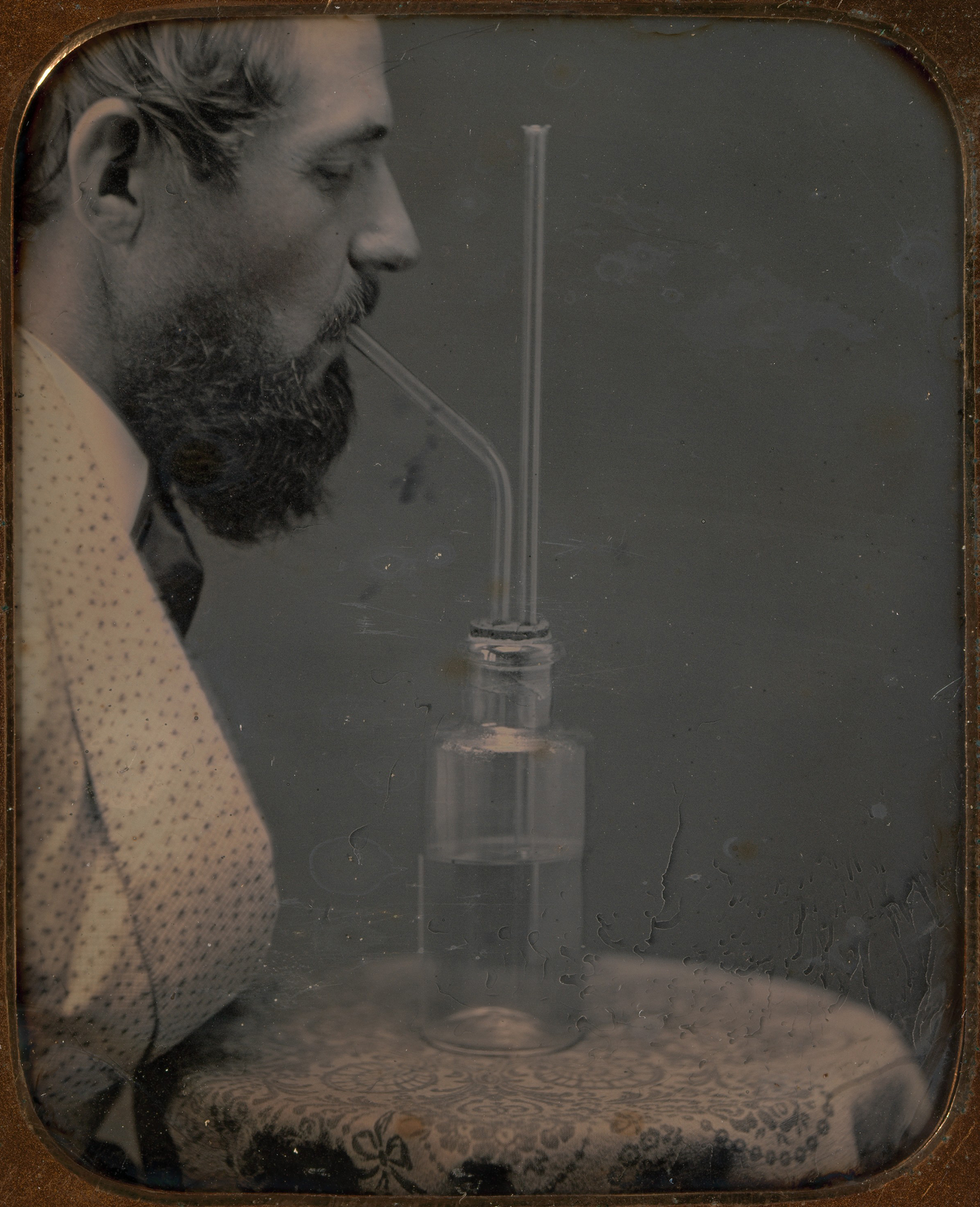
James Hyatt Inhaling Chlorine Gas, by Peter Welling, c. 1850. The Metropolitan Museum of Art, Gilman Collection, Museum Purchase, 2005.
• The past, present, and future of the periodic table of elements, featuring Chernobyl on the Seine and useless germanium. (Bloomberg Businessweek)
• “How do you prove a two-century-old activity that was, as a matter of life and liberty, unrecorded?” (CityLab)
• Medieval tweeting and twittering. (British Library Blogs)
• Remembering a time when people feared that you could accidentally check out tuberculosis at the public library. (Smithsonian.com)
• A new statue at the Billie Jean King National Tennis Complex in Queens honors Althea Gibson. (The Undefeated)
• On Silvio Gesell. (Planet Money)
• Finding inspiration for a novel in the Camel Corps. (Longreads)
• “ ‘With all the drawbacks of slavery, it should be noted that slavery was the earliest form of social security in the United States,’ students read in Alabama history textbooks of the 1950s, ’60s and ’70s. And there was this: ‘A jail sentence or the execution of a slave was considered to be more of a punishment for the master than for the slave, because the slave was such valuable property.’ ” (Washington Post)
• The disappearing murals of Sergio O’Cadiz. (Atlas Obscura)
• Listening for Marian Anderson. (NPR)
• This week in obituaries: an anti-war activist, a master of the accordion, a Gambian founding father, an American who became a senior member of the Chinese Communist party, the official painter of Mao, a designer who worked with “romantic mathematics,” and a photographer of fancy people.